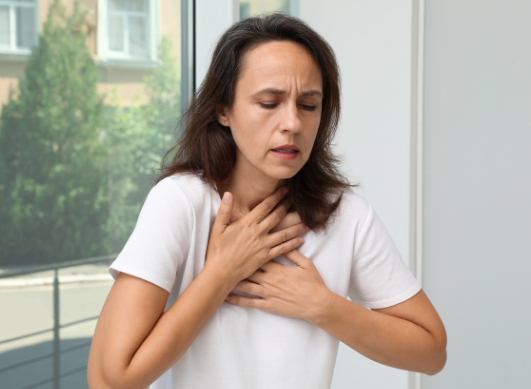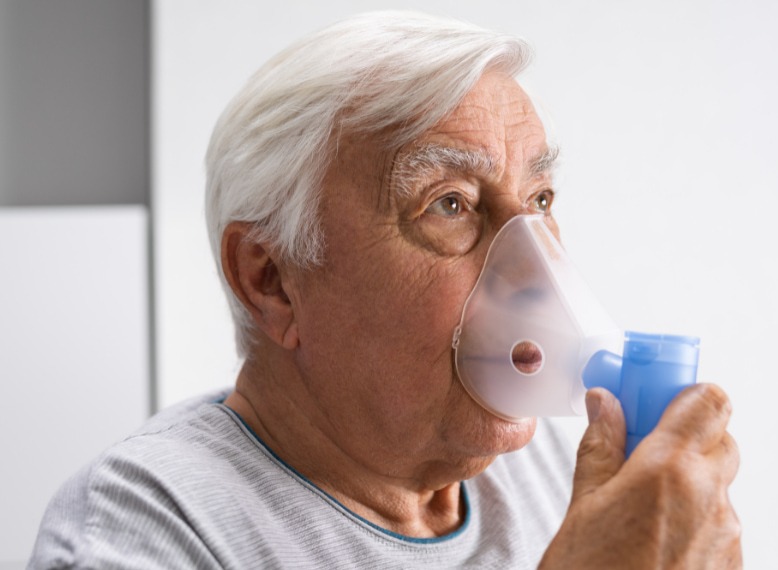COPD and emphysema: How are they connected?
Published Jun 13, 2025 • By Somya Pokharna
Did you know that emphysema is actually a type of COPD? While many people use these terms interchangeably, they’re not the same thing. Understanding how they’re connected can help you make sense of your symptoms, treatment options, and overall health outlook.
So, what do these conditions mean? How do they differ, and how often do they appear together?
Whether you're managing a diagnosis or supporting a loved one, this article hopes to help you breathe easier.

What is COPD, and how is emphysema related to it?
Chronic obstructive pulmonary disease (COPD) is a progressive lung condition marked by long-term breathing problems and poor airflow. It is a collective term that includes several diseases which damage the lungs and obstruct airflow, most commonly chronic bronchitis and emphysema.
Emphysema is one of the two primary types of COPD and involves the destruction of the alveoli, or the tiny air sacs in the lungs responsible for oxygen exchange. In people with emphysema, these air sacs are damaged and lose their elasticity, which makes it harder to exhale fully and take in new air.
It’s important to note that all cases of emphysema fall under the COPD umbrella, yet not all people with COPD have emphysema; they may have chronic bronchitis or a mix of both.
Understanding this distinction helps with accurate diagnosis and more targeted treatment.
What causes COPD and emphysema?
Both conditions share similar risk factors, with smoking being the most significant. An inclusive list with additional causes that contribute to their development is as follows:
- Cigarette smoking: The leading cause; long-term exposure causes airway inflammation and alveolar damage.
- Secondhand smoke: Inhalation of smoke from others can still lead to lung damage.
- Air pollution: Prolonged exposure to urban or industrial pollutants increases risk.
- Occupational hazards: Dust, fumes, or chemicals in the workplace can irritate the lungs over time.
- Alpha-1 antitrypsin deficiency: A rare genetic condition that causes early-onset emphysema, especially in non-smokers.
- Biomass fuel exposure: Common in low-income settings where wood or coal is used for cooking or heating.
- E-cigarettes and vaping: Still under investigation, but linked to airway irritation and inflammation.
Most patients with emphysema or COPD have more than one contributing factor. Quitting smoking and reducing environmental exposures can significantly lower risk and slow disease progression.
How do the symptoms of COPD and emphysema overlap?
Because emphysema is a form of COPD, the symptoms often overlap. Both conditions can manifest as:
- Shortness of breath (dyspnea), particularly during activity
- Chronic cough (with or without mucus)
- Wheezing or tightness in the chest
- Fatigue and reduced ability to exercise
However, there are subtle differences in emphysema, specifically:
- Breathlessness tends to appear earlier and worsens gradually
- Patients may appear thin and breathe with pursed lips (“pink puffers”)
- Mucus production is less common than in chronic bronchitis
Symptoms typically develop slowly over years, which is why early diagnosis is often missed. Over time, breathlessness may occur even at rest.
What’s happening inside the lungs?
The structural damage in emphysema
Emphysema causes destruction of the walls between alveoli, leading to larger, less efficient air sacs. This reduces the surface area available for gas exchange, which lowers the oxygen level in the blood, traps old air, making it hard to draw in fresh oxygen, and increases carbon dioxide levels.
The broader inflammation of COPD
In COPD more broadly, chronic inflammation affects both the airways (bronchi) and alveoli. This inflammation leads to narrowed airways, excess mucus production (especially in chronic bronchitis), airflow obstruction, and lung hyperinflation.
The vascular story
Emerging research shows that COPD and emphysema also affect the lung’s blood vessels. Cigarette smoke can directly damage the endothelial cells that line blood vessels in the lungs. This damage contributes to pulmonary hypertension (high blood pressure in the lungs), which increases the workload on the right side of the heart. Over time, this can lead to cor pulmonale, or right-sided heart failure.
Understanding this vascular connection helps explain why people with emphysema may experience fatigue, dizziness, and swelling in the legs.
How are COPD and emphysema diagnosed and monitored?
The mainstay of diagnosis is a spirometry test, which measures how much air you can exhale and how fast. A FEV1/FVC ratio less than 0.7 confirms airflow limitation, the hallmark of COPD.
Additional tools include chest X-rays or CT scans to detect hyperinflation or bullae (large air pockets), pulse oximetry and arterial blood gases to measure oxygen and carbon dioxide levels, alpha-1 antitrypsin testing for younger patients or non-smokers with emphysema, and a 6-minute walk test to assess functional capacity and monitor progression
These tests help doctors understand the severity of the disease and guide treatment decisions.
What treatments work for both conditions?
While neither COPD nor emphysema can be cured, many treatments are available to manage symptoms, reduce flare-ups, and improve quality of life. Treatment is typically tailored to the severity of symptoms, history of exacerbations, and the person’s overall health.
Smoking cessation
This is the most important step in slowing the progression of both COPD and emphysema. Quitting smoking not only prevents further lung damage but can also improve lung function over time. Several tools are available to help with this, including nicotine replacement therapy, prescription medications, and behavioral counseling.
Bronchodilators
Bronchodilators help relax the muscles around the airways, making it easier to breathe. Short-acting bronchodilators like albuterol provide quick relief during flare-ups, while long-acting medications such as salmeterol or tiotropium are used daily to maintain lung function and reduce symptoms.
Inhaled corticosteroids
For patients with frequent exacerbations, inhaled corticosteroids may be added to reduce inflammation in the lungs. These are often prescribed in combination with long-acting bronchodilators for more effective control of symptoms.
Pulmonary rehabilitation
This comprehensive program includes exercise training, breathing techniques, education, and nutritional counseling. It has been shown to improve quality of life, reduce hospitalizations, and help patients manage breathlessness and fatigue more effectively.
Vaccinations
Preventing respiratory infections is key in managing both conditions. Annual flu vaccinations and pneumococcal vaccines are recommended to reduce the risk of exacerbations caused by infections.
Oxygen therapy
In advanced stages, when blood oxygen levels are persistently low, supplemental oxygen may be prescribed. Some patients use it only during activity or sleep, while others may need it continuously to maintain adequate oxygenation.
Surgical options
In select patients, particularly those with severe emphysema, surgical interventions may be considered. Lung volume reduction surgery removes damaged portions of the lung to improve the function of the remaining tissue. A bullectomy can remove large, non-functional air pockets, and lung transplantation may be an option for end-stage disease.
Did you find this article helpful?
Give it a “Like” and share your thoughts and questions with the community in the comments below!
Take care!
Sources:
Agarwal, A. K., Raja, A., & Brown, B. D. (2025). Chronic obstructive pulmonary disease. In StatPearls. StatPearls Publishing.
Fletcher, J. & Villines, Z. (2018, October 9). COPD vs. emphysema. Medical News Today.
Pahal, P., Avula, A., & Afzal, M. (2025). Emphysema. In StatPearls. StatPearls Publishing.
Voelkel, N. F., Gomez‐Arroyo, J., & Mizuno, S. (2011). COPD/Emphysema: The Vascular Story. Pulmonary Circulation, 1(3), 320–326.
1 comment
You will also like

COPD: understanding the effects of cold weather on the disease and avoiding exacerbations
Nov 20, 2023 • 1 comment

 Facebook
Facebook Twitter
Twitter


